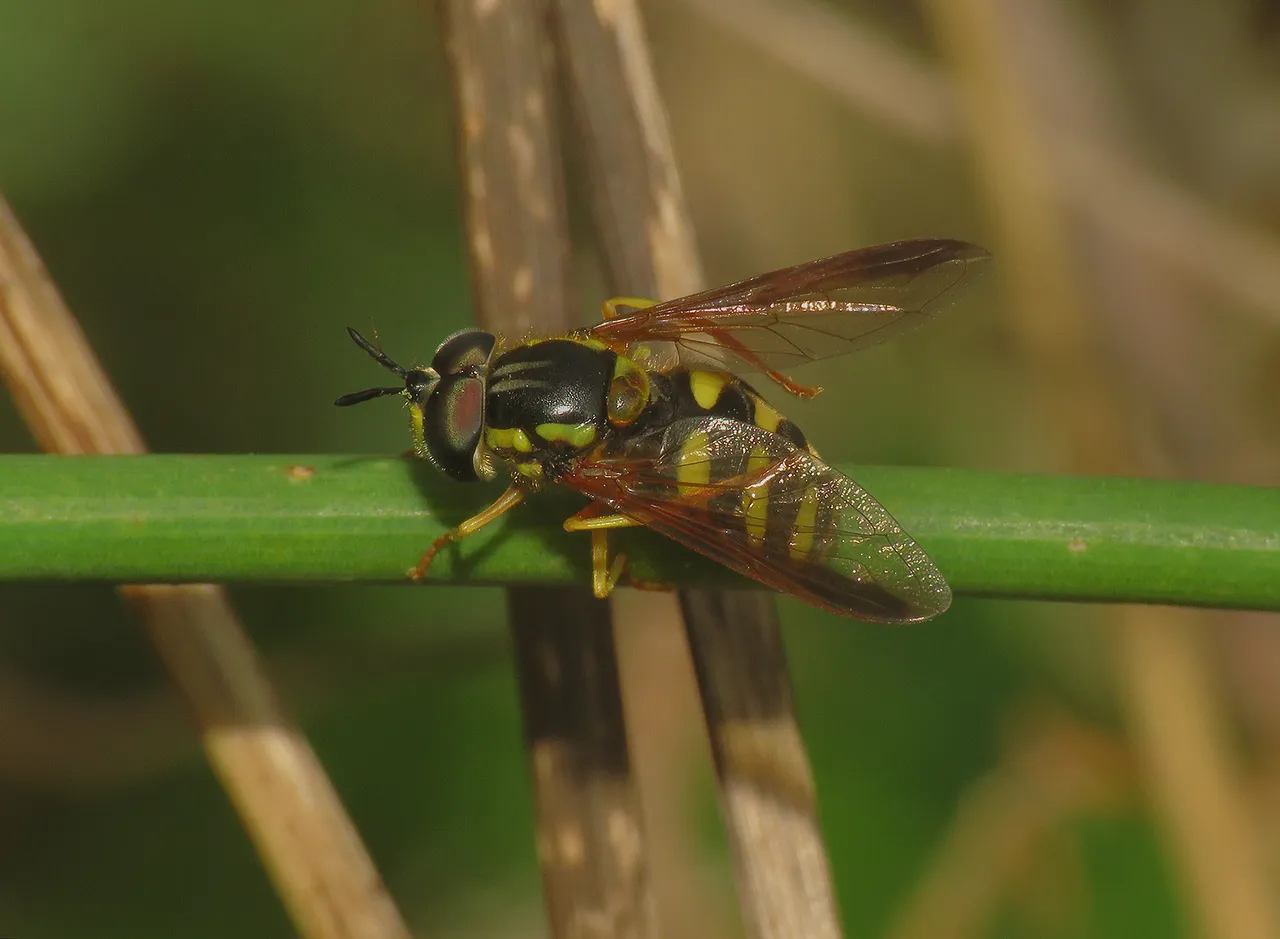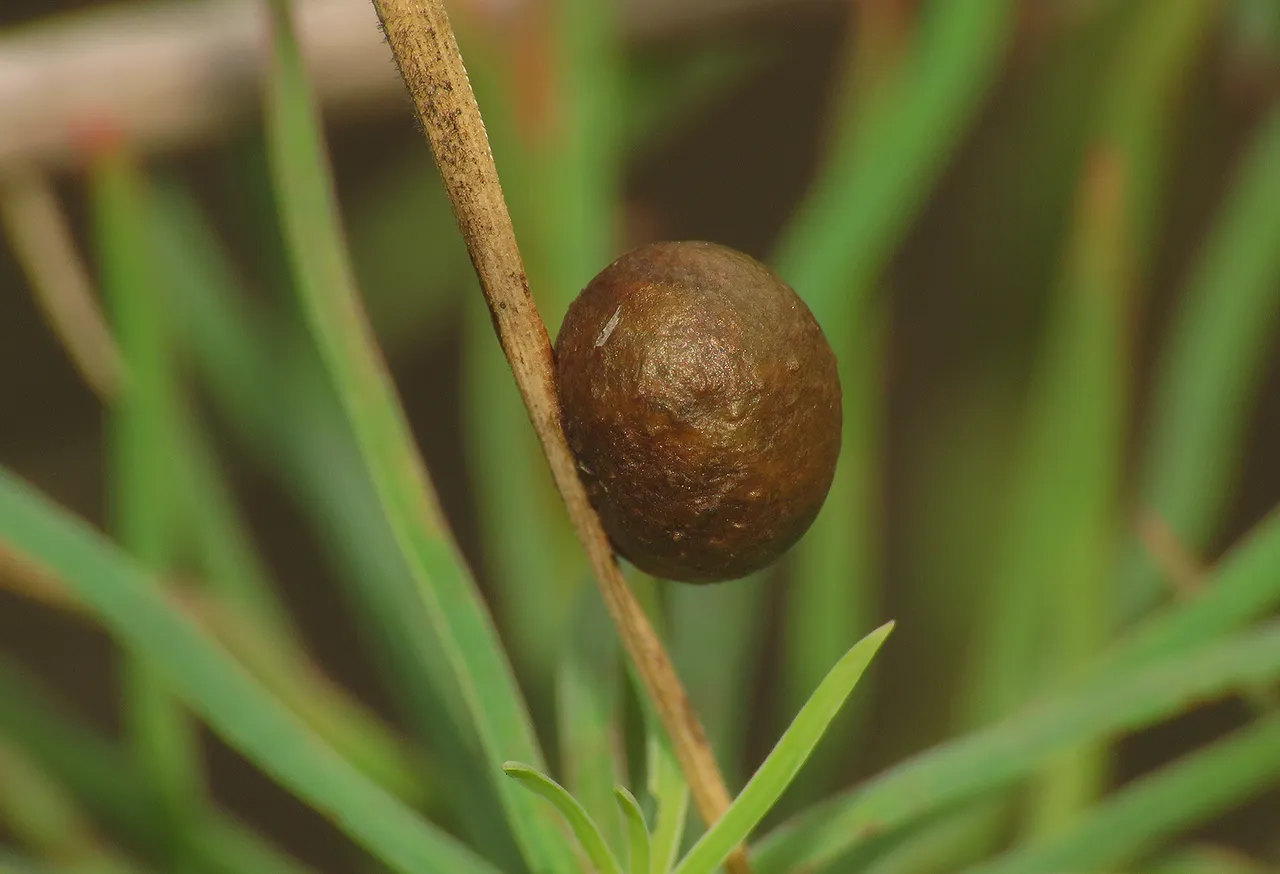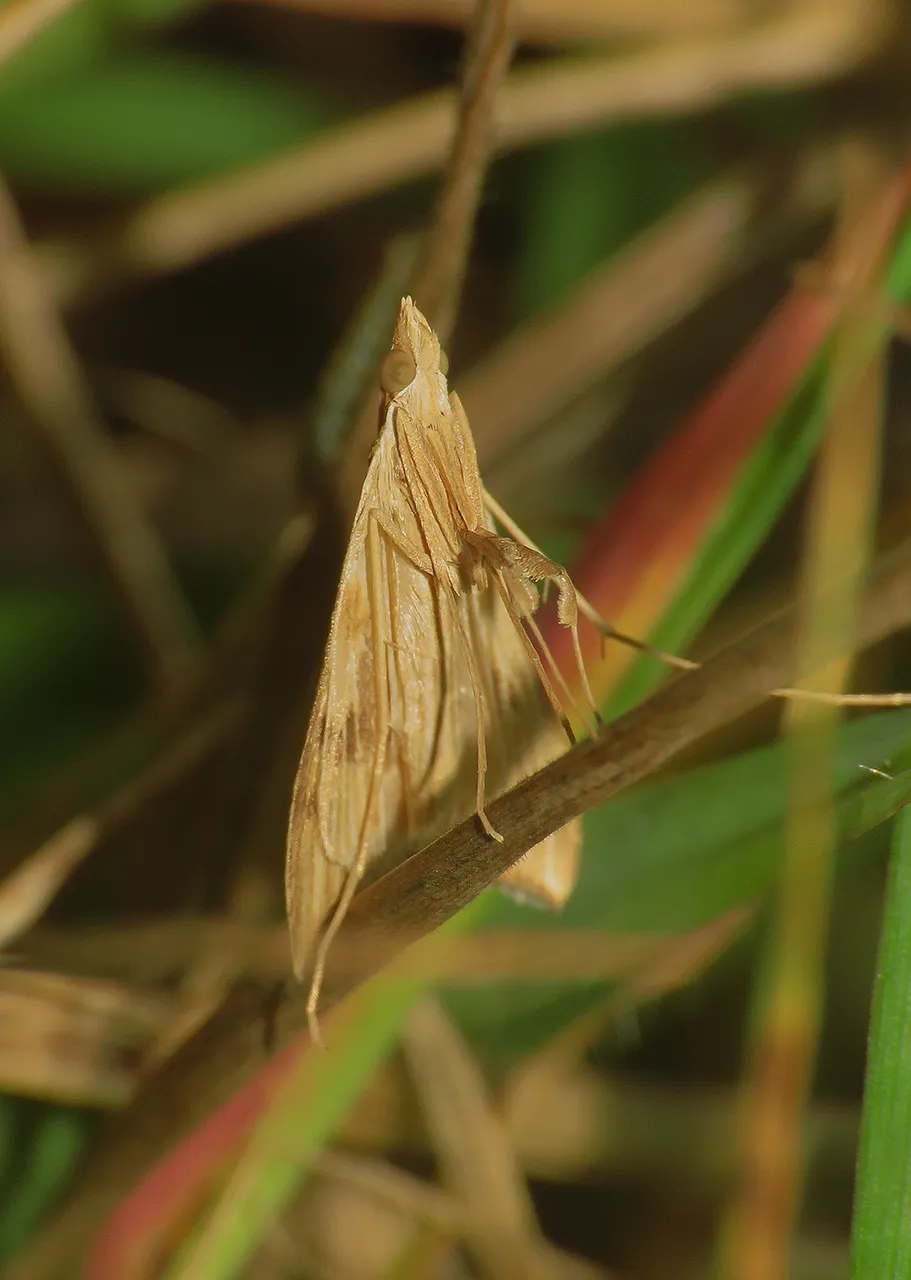27th of October was slightly colder than the other October days of 2023 that preceded it. The weather was sunny, though, but a very refreshing breeze was blowing, making the atmosphere less summer-like than usual despite the sky being only slightly cloudy and mostly blue. I spent a couple of afternoon hours in Marlera, the coastal area situated a couple of kilometers from the village of Liznjan and about five or six kilometers from where I live, and today ...
... a little less than a month from then, I'm going to show you some plants and insects I photographed on that occasion. Have a good viewing.

You'll see one spider too. Only one. The name of the species is Oxyopes heterophthalmus. It belongs to the Oxyopidae family.

Since the weather was a bit colder, I photographed more plants & less insects than usual. These rose hips belong to the Rosa dumalis wild rose.
Not far from there, a meter or two from the rose ...

... on the long blade of grass near a Spartium junceum shrub ...
... a wasp-mimicking fly from the Syrphidae family was cleaning its legs and the feeding apparatus. After observing the fly for a couple of minutes ...

... I returned to the rose.
Besides being healthy and edible, these red fruits are also very photogenic.

Here you can see two less attractive, dry rose hips that have lost their vivid red color. I found them on the small dry branch of the same Rosa dumalis plant.

When I collected enough rose hip portraits ...
... I noticed that the fly didn't fly away. Not far away, at least. In this and the following ten photographs ...
... the Chrysotoxum elegans - that's the name of the species, was cleaning its legs and wings on the Spartium junceum shrub.
This is the Vitis sylvestris, the wild grapevine that produces small quantities of sweet, edible fruits at the end of the summer. Those fruits had already been fallen or eaten on 27 of October. On one of the leaves of that climbing shrub ...
... I photographed the elegant spiral shell of the Theba pisana snail. The snail was resting, sealed inside the shell.
When I took a look at the grass around the grapevine ...

... I noticed some cool little things there.

I don't know what this is.
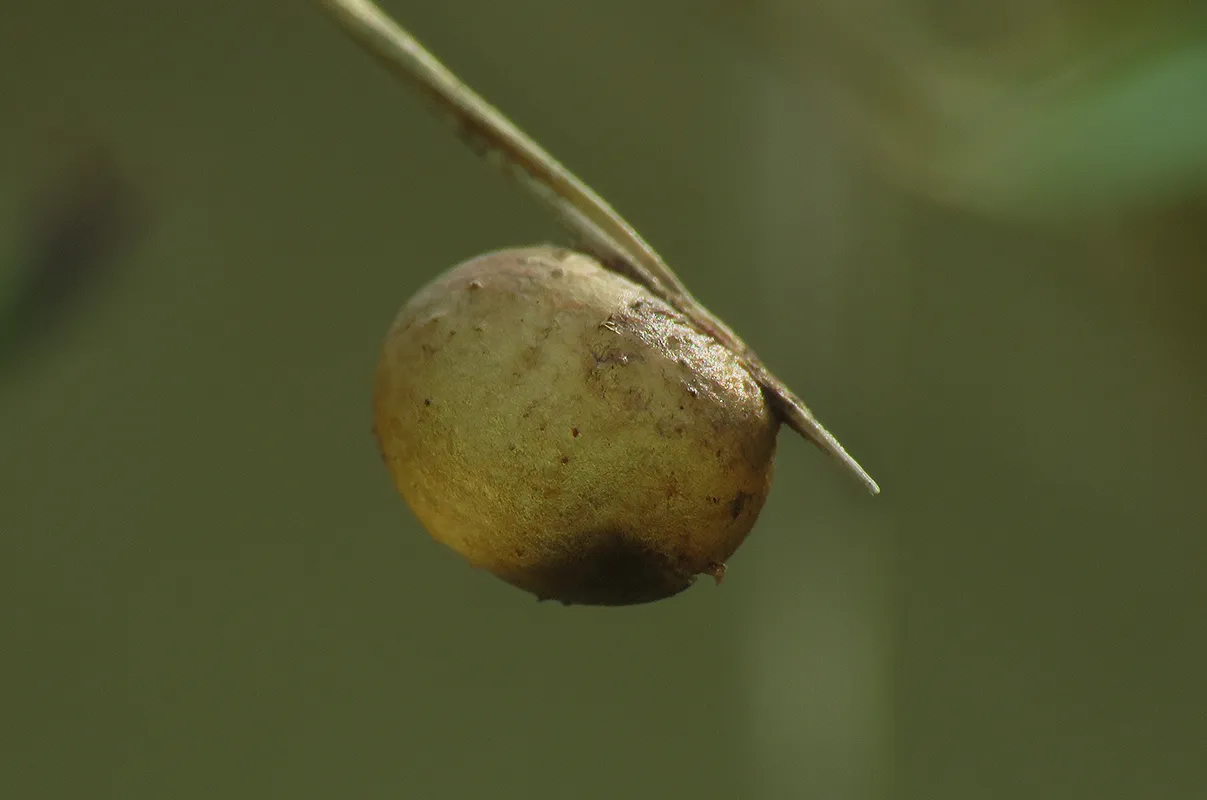
It looks like some kind of cocoon, something produced by an arachnid or insect. But who knows - I, most certainly don't. At one point, while I was busy observing these tiny balls through the macro lens ...

... a relatively big, black beetle passed me by. I encounter this insect quite often, but only today, while preparing this post, I found its scientific name, and the second half of that name was pretty surprising to me. The name of the species is Pentodon idiota. It belongs to the Scarabaeidae family.
Here you can see another one of those mysterious little spheres.
Just like before, the thing was attached to the dry grass.
But this time, the leaf of grass was hanging above the Euphorbia cyparissias plant, and that combination looked pretty cool in the photograph.

Some minutes later, I found two moths there in the grass. In this photograph, you can see the first one. The name of the species is Rhodometra sacraria. The family is Geometridae.
The second moth was resting in an interesting erected pose.
The family is Crambidae but I can't tell you what species exactly this is.

Here you can see the tiny dry fruit of some dry plant I wasn't able to identify. While I was photographing that thing ...

... a dragonfly landed on the grass a meter or two from me. Sympetrum striolatum is the name of this species from the Libellulidae family.

This bee-mimicking fly belongs to the Syrphidae family. The name of the species is Eristalis tenax. The fly was feeding on the nectar of the Diplotaxis tenuifolia flowers. Not far from there ...

... a Helicoverpa armigera caterpillar was feeding on the yellow flower of a plant I wasn't able to identify.

This is the Clinopodium nepeta flower.

This is the Euscelis distinguendus ...

... a leafhopper from the Cicadellidae family.
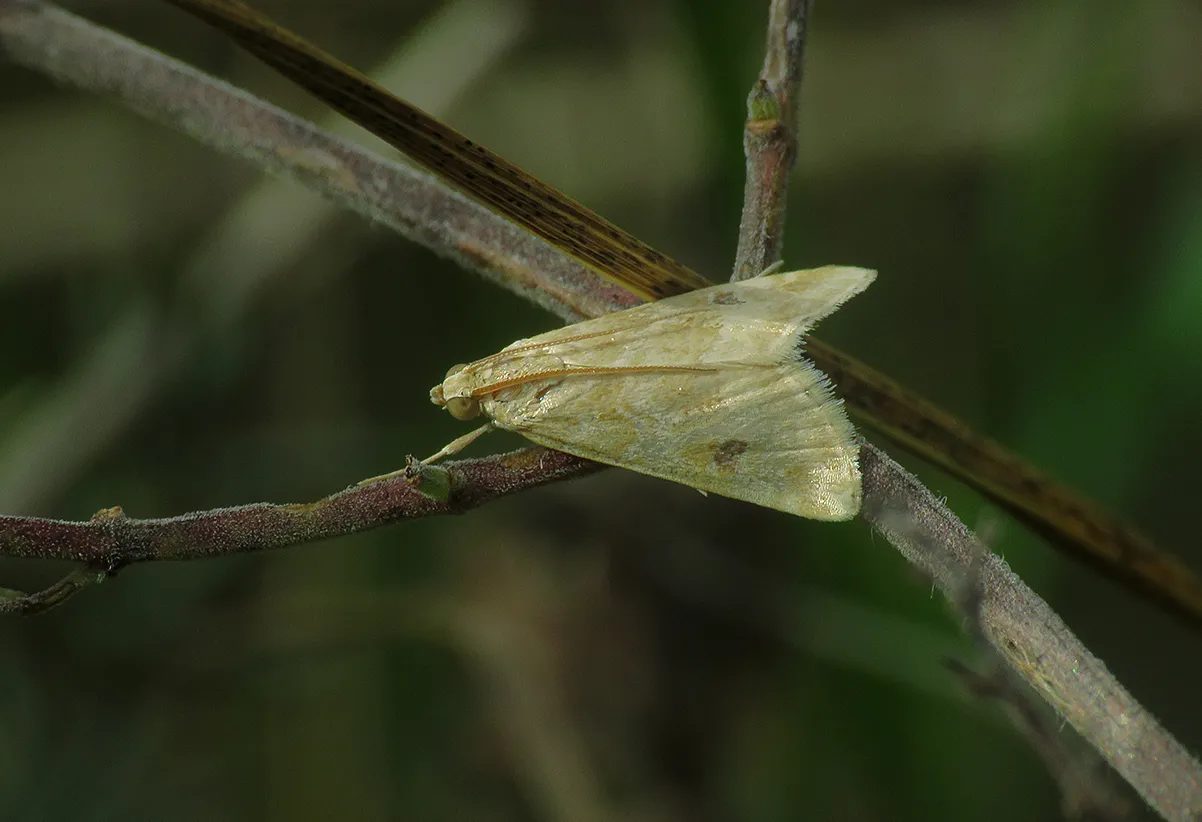
Here you can see another moth. I wasn't able to identify the species. The family is Crambidae.
On the way back to the car, I came across several small groups of Messor wasmanni ants that were collecting the grains of the Setaria pumila grass.
AND THAT'S IT. AS ALWAYS HERE ON HIVE, THE PHOTOGRAPHS ARE MY WORK.
The following links will take you to the sites with more information about some of the protagonists of this post. I found some stuff about them there.
https://en.wikipedia.org/wiki/Oxyopes_heterophthalmus
https://en.wikipedia.org/wiki/Rosa_dumalis
https://en.wikipedia.org/wiki/Chrysotoxum_elegans
https://www.jkip.kit.edu/garten/english/853.php
https://species.wikimedia.org/wiki/Pentodon_idiota
https://en.wikipedia.org/wiki/Rhodometra_sacraria
https://en.wikipedia.org/wiki/Eristalis_tenax
https://uk.inaturalist.org/taxa/914482-Euscelis-distinguendus
https://www.antwiki.org/wiki/Messor_wasmanni





